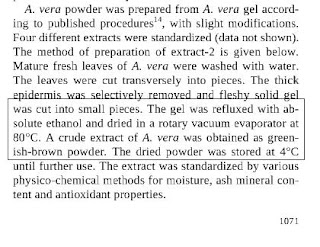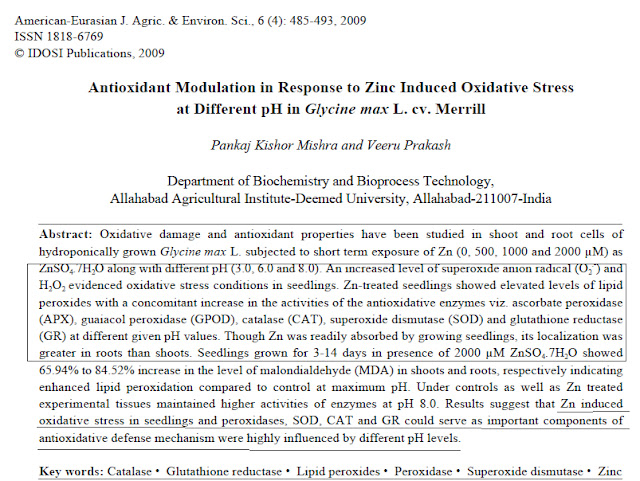This 2008 paper describes the antidiabetic activity of an Aloe vera gel extract with histological data to show the changes in STZ-induced diabetic rats. This critique of the paper highlights the use of important data like extract doses (2004 J.Med. Food paper by Rajasekaran et al.), expected results, key hypotheses from earlier papers and the omission of important details such as the preparation of the different extracts of which the test extract was chosen as the best one. I couldn't get the 2004 J.Med.Food paper but the 2006 paper in Clin. and Exper. Pharmacol. Physiol. by the same authors mentions some of the data in the 2004 paper.
Four extracts made (DATA NOT SHOWN). Extract 2 taken for further study. The gel is refluxed with absolute ethanol and dried in a rotary vacuum evaporator of 80 degrees C. If alcohol can actually extract some of the polysaccharides in the gel, drying at 80 degrees C will cook this extract which is probably why the authors get greenish brown powder.
A 2008 review by C. T. Ramachandra and P. Srinivasa Rao in the American Journal of Agricultural and Biological Sciences (vol. 3, issue 2, pages 502-510) mentions that Aloe vera gel can be heated to 65 degrees Celsius for less than 15 min or to 85-95 degrees Celsius for 1-2 min. Even if oxidation of certain compounds in the gel is important for antidiabetic activity, this heating at 80 degrees Celsius is a long one!
Contrast this with the procedure described by Rajasekaran et al. in a 2006 paper. The pulp (or gel) was lyophilized, extracted with 95% ethanol and dried (no temperature mentioned) to remove the solvent. These authors also published a paper in 2004 in J. Med. Food which has been cited by Noor et al. in the 2008 paper.
------------------------------------------------------------------------------------------------------------
The 2006 paper by Rajasekaran et al. summarizes the reduction in blood glucose in STZ-induced rats receiving a dose of 300 mg/kg Aloe vera relative to control diabetic rats (21 days after administration). The 2008 Noor et al. paper uses the same dose of 300 mg/kg Aloe vera extract (also three weeks) and gets approximately the same effect. In fact, Rajasekaran et al. used 55 mg/kg bw STZ to induce diabetes, Noor et al. used 30 mg/kg STZ.


------------------------------------------------------------------------------------------------------------
Ghannam et al. (1986) used dried sap of Aloe vera and Rajasekaran et al. (2004, 2006) used 95% ethanol to extract Aloe vera pulp.
-----------------------------------------------------------------------------------------------------------
Helal et al. (2003) already showed antidiabetic activity of Aloe vera in alloxan-treated diabetic rats.
-----------------------------------------------------------------------------------------------------------
Would alcohol not extract the same principles water can PLUS other more non-polar molecules? Could these kidney-related changes be due to the higher dose of STZ than due to alcohol used for the extraction?




















































